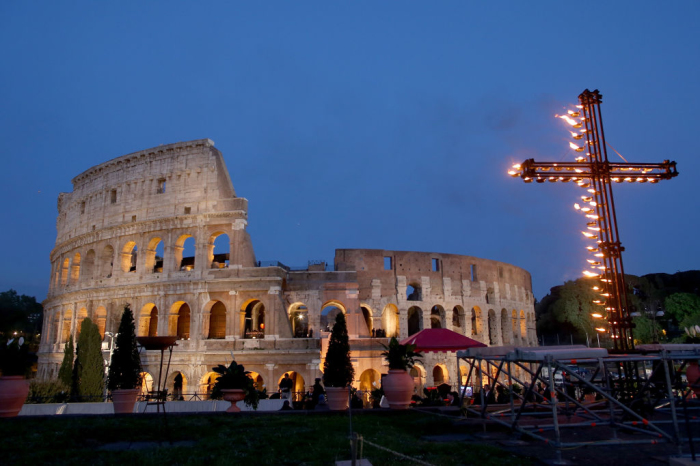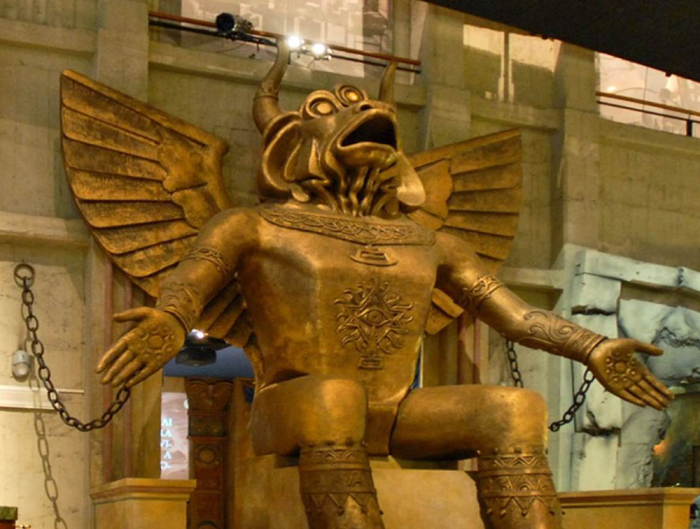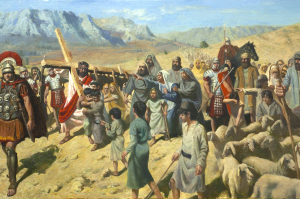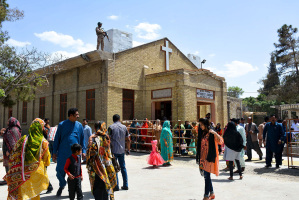Moloch statue of child sacrifice on display at Colosseum, holy site for Christian martyrs

A statue of the pagan deity Moloch, to which children were sacrificed in the ancient world, is now stationed at the entrance to the Colosseum in Rome, which has been designated as a sacred site because of the Christian martyrs who died there.
The statue of Moloch outside the Colosseum was billed as celebration of Carthaginian culture and art.
"A reconstruction of the terrible deity Moloch, linked to Phoenician and Carthaginian religions and featured in the 1914 film 'Cabiria' (directed by Giovanni Pastore and written by Gabriele D’Annunzio) will be stationed at the entrance to the Colosseum to welcome visitors to the exhibition," a press release about the exhibit states.
The large-scale exhibition will run through March 29, 2020.

The ancient Roman stadium was declared a sacred site in 1749 by Pope Benedict XIV in official church policy. Stations of the Cross were later installed depicting images of Jesus Christ on His way to the cross with accompanying prayers.
Many faithful Catholics are outraged that a representation of the pagan god sits outside a place where Christians were brutally tortured and killed, Life Site News reports.
"We were so excited the day we decided to go to the Colosseum,” Alexandra Clark told the outlet. “But the moment we got there the sight that greeted us was horrifying! Standing guard over the entrance was the colossal pagan statue of Moloch. It was placed in that prime spot so that everyone that entered into the Colosseum had to pass it,” she said, noting that it felt as though it was placed there to mock where the martyrs were slaughtered.
Throughout the Old Testament God speaks with disgust about the worship of Moloch, particularly the offering of children in burnt sacrifices.
“Say to the people of Israel, Any one of the people of Israel or of the strangers who sojourn in Israel who gives any of his children to Molech shall surely be put to death. The people of the land shall stone him with stones. I myself will set my face against that man and will cut him off from among his people, because he has given one of his children to Molech, to make my sanctuary unclean and to profane my holy name. And if the people of the land do at all close their eyes to that man when he gives one of his children to Molech, and do not put him to death, then I will set my face against that man and against his clan and will cut them off from among their people, him and all who follow him in whoring after Molech," God tells Moses in Leviticus 20:1-5.
The art display of the Moloch statue follows another incident in Rome where pagan symbols were situated at or near sacred sites and gatherings.
Controversy erupted in Vatican City last month over the use of Amazonian carved images, specifically Pachamama statues, during the Amazon synod, a synodical meeting of Catholic bishops, which some considered overt idolatry.
Vatican and synod officials asserted that the images were representative symbols from the region, not pagan idols.
Traditional Catholics hurled the Pachamama statues — symbols of fertility from the Amazon region — into the Tiber River in Rome after having removed them from a side chapel of Santa Maria in Transpontina, a church situated next to St. Peter's Basilica.




























